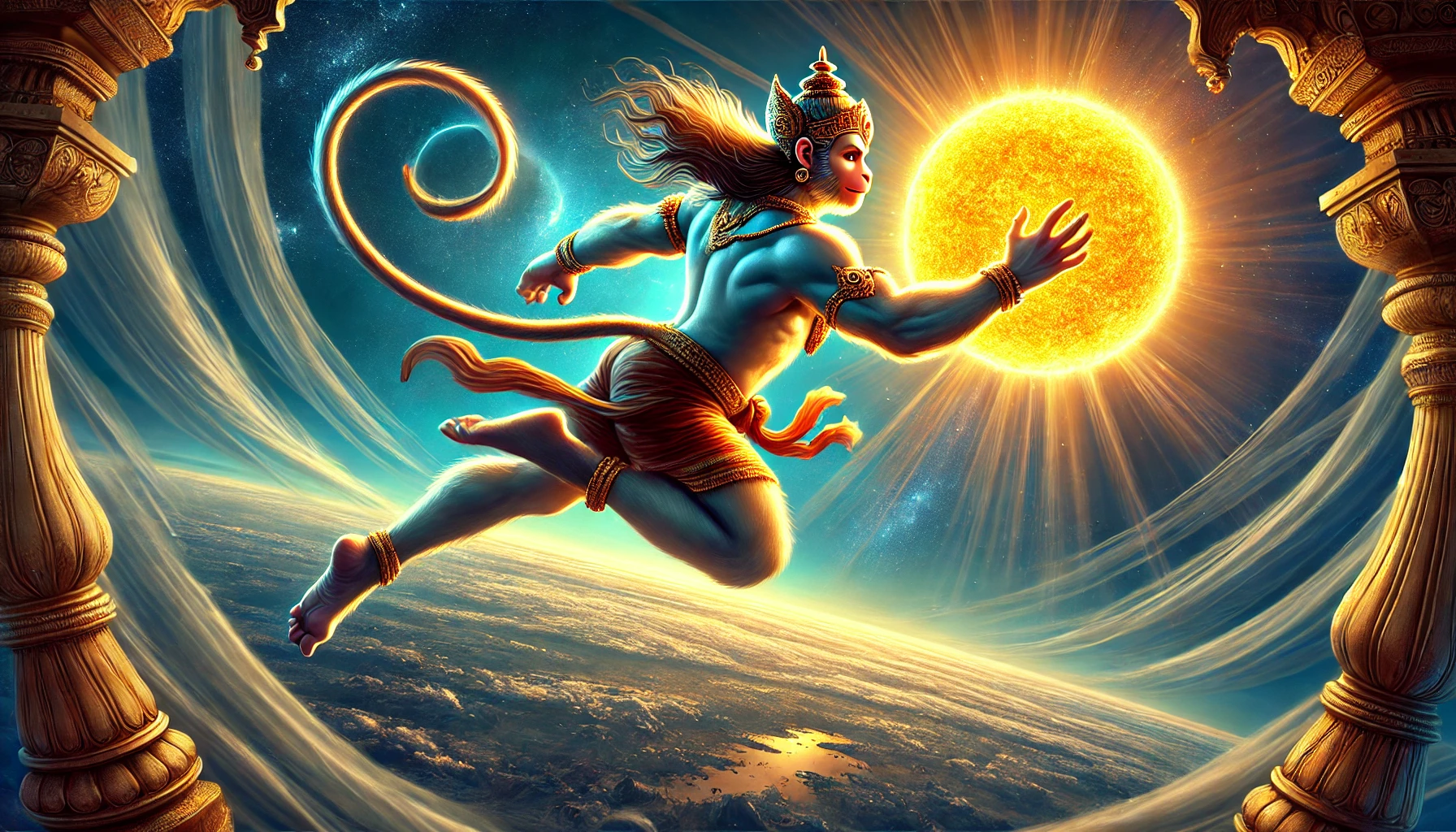
Ancient scriptures often hold surprising scientific knowledge encoded within their verses. One such text is the Hanuman Chalisa, a 40-verse devotional hymn dedicated to Lord Hanuman. Remarkably, this sacred hymn contains a verse that reveals the distance between the Sun and Earth with astonishing accuracy. Let’s dive into the details of this intriguing revelation.
The Verse in Question
The Hanuman Chalisa, composed by Tulsidas in the 16th century, includes the following verse:
“Yug sahastra yojan par Bhanu,
Leelyo taahi madhur phal jaanu.”
Translated, it means:
“The Sun, situated at a distance of yuga-sahasra-yojana,
Was swallowed by Hanuman, thinking it to be a sweet fruit.”
This verse has fascinated both devotees and scholars for centuries. Let’s break down its components to uncover the scientific significance.
Understanding the Units
To decode the distance mentioned in the Hanuman Chalisa, we need to understand the ancient units of measurement used in the verse:
- Yuga: An epoch or era in Hindu cosmology. A yuga typically spans several thousand years.
- Sahasra: A thousand.
- Yojana: An ancient unit of distance, roughly equivalent to 8 miles or about 13 kilometers.
By combining these units, we get the formula: Yug * Sahastra * Yojana.
Calculating the Distance
Let’s do the math:
- Yuga: In this context, a yuga can be taken to mean 12,000 years (a rough average across different interpretations).
- Sahasra: This translates to 1,000.
- Yojana: Approximately 13 kilometers.
So, the distance mentioned is: 12,000 * 1,000 * 13 kilometers = 156,000,000 kilometers.
Astonishingly, this calculation is close to the modern scientific measurement of the average distance between the Earth and the Sun, which is about 149.6 million kilometers.
Bridging Ancient Wisdom and Modern Science
How could an ancient text possess such precise astronomical knowledge? This question has sparked various theories:
- Oral Traditions and Observations: Ancient civilizations had keen observational skills and oral traditions that preserved astronomical knowledge.
- Divine Inspiration: Devotees believe that such knowledge could be divinely inspired, a testament to the spiritual insight of ancient sages.
- Interpretative Flexibility: The Hanuman Chalisa might have encoded knowledge in a form that could be interpreted correctly by future generations.
The Significance of Hanuman’s Feat
In the verse, Hanuman’s act of leaping to the Sun, mistaking it for a fruit, symbolizes more than just physical prowess. It reflects his boundless devotion and courage, traits that inspire millions of devotees. The astronomical knowledge embedded in this tale serves as a reminder of the depth and wisdom contained within ancient scriptures.
Conclusion: The Harmony of Faith and Science
The Hanuman Chalisa’s reference to the Sun-Earth distance highlights an intriguing intersection of faith and science. It encourages us to appreciate the profound wisdom of ancient texts and explore their teachings with an open mind. Whether viewed through a spiritual or scientific lens, the Hanuman Chalisa continues to inspire and enlighten.

